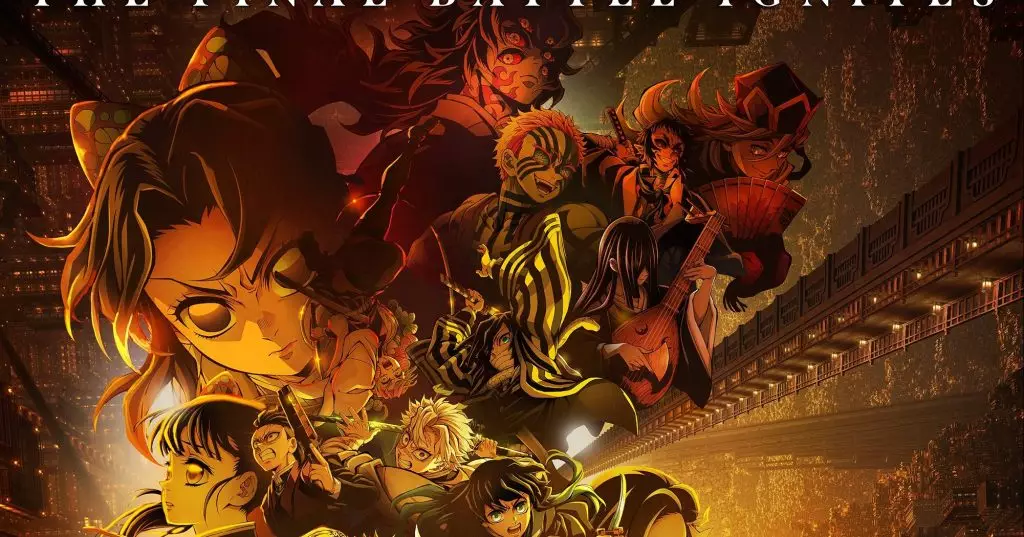Traditional Hollywood blockbusters no longer monopolize the box office like they once did. The recent sluggish September indicates a shift: studios must now grapple with a more fragmented, yet fiercely loyal, audience. Unlike last year’s blockbuster-record-breaking “Beetlejuice,” which amassed nearly $300 million domestically, this year’s lineup is more modest, emphasizing the importance of authentic engagement over spectacular openings. This shift opens a window for niche genres, especially anime, to carve out significant territory in cinema revenues. Anime films, often viewed as specialized, are proving their mettle with staggering pre-sales and international successes, as seen with “Infinity Castle.” Such trends underscore a broader cultural shift where dedicated fanbases drive film performance, and studios that recognize this can leverage the power of these passionate communities.
The Phenomenal Rise of Anime and Its Commercial Viability
Anime’s ascent in Western markets isn’t accidental; it’s a long-term phenomenon fueled by dedicated fans and global cultural trends. The anticipation for “Demon Slayer: Infinity Castle” exemplifies this, with pre-sale figures nearing $10 million—an unprecedented feat for an animated film in the U.S. This record-breaking pre-ticket demand surpasses prior anime milestones like “Mugen Train” and “Jujutsu Kaisen 0,” which were already significant successes. These films demonstrated that anime can command audiences just as much as live-action blockbusters, if not more in certain segments. The upcoming release’s early screenings in IMAX and premium formats also suggest that studios are banking on offering high-end viewing experiences, further elevating anime’s status. The core market consists of die-hard fans who show up early and can inject an intense, frontloaded momentum into opening weekends—yet, this enthusiasm might cause quick declines in subsequent weeks, a typical trend for genre films.
International Dominance and Cultural Impact
The impressive international haul of “Infinity Castle” underscores anime’s global appeal. Grossing nearly $193 million abroad—75% from Japan—the film has already surpassed the entire regional box-office lifetime of “Mugen Train.” Its record-breaking openings in Southeast Asian markets, where it outperformed top-tier animated films like “Super Mario Bros.” and “Frozen II,” reveal the universal appetite for anime’s storytelling style, aesthetic, and emotional depth. This trend signifies a shift where Japanese animation is not merely a niche but a dominant force across diverse markets, shaping Hollywood’s future strategies. Studios are increasingly aware that domestic success alone isn’t enough; worldwide reception now drives overall box office performance, especially for international titles like anime.
Strategic Implications for the Industry
The success of “Infinity Castle” illustrates a crucial insight: niche genres with dedicated followings can challenge the dominance of traditional Hollywood fare. The film’s performance demonstrates that passionate fandoms can generate momentum, from record-breaking presales to phenomenal regional openings, even without extensive initial marketing or broad mainstream appeal. The fact that anime films tend to have a front-loaded box-office trajectory emphasizes the importance of understanding fan behaviors—early enthusiasm can be leveraged to maximize opening-weekend revenues, but long-term box office longevity is often limited unless the film resonates broadly. The industry’s challenge will be balancing immediate hype with sustained engagement, possibly exploring more international releases and premium formats to sustain growth.
The Future of Animation and Audience Engagement
“Infinity Castle” exemplifies how animated features, once confined to niche markets, are now central players on the global stage. The film’s record-setting openings and significant international grossing position it as an important bellwether for how animated franchises—especially those rooted in existing popular series—can redefine box office expectations. This phenomenon isn’t solely about revenue; it reflects a cultural shift where storytelling in animated form garners serious artistic and commercial respect. Studios may increasingly invest in franchise-building, knowing the loyalty of dedicated fans translates into profitable box-office returns. As anime continues to escalate its influence, Hollywood might need to reconsider their approach, integrating more culturally-specific content and fan-centric strategies to stay competitive. This is not merely a passing trend but a fundamental transformation shaping how audiences worldwide consume entertainment.

